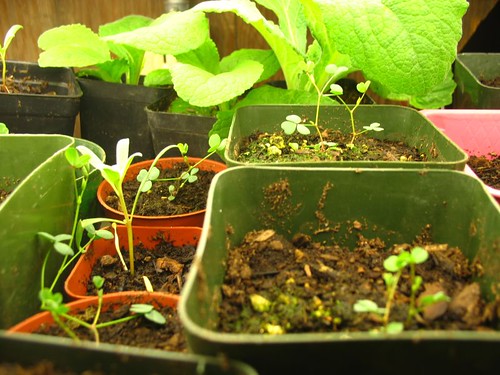
It's a little worrisome to me that the leaves look so much like a weedy oxalis. This is a west coast native from the Fabaceae. I'm not sure what to expect from it; I've never seen it before in real life, and it seems rather variable in pictures. Common names are Seaside Bird's-Foot Trefoil and Witch's Teeth.
I bought the seeds several months ago, but I didn't sow them until Judith Larner sent this picture around, via her mailing list:
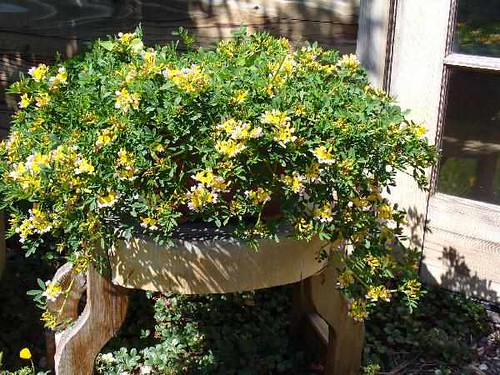
And, I was, like, yeah--sow those seeds ASAP. So I did.
Ms. Larner says:
"Coast Lotus, (Lotus formosissimus), is a good example of one of the many beautiful 'small things,' the annual and perennial wildflowers, that pack a powerful punch ecologically and horticulturally, and are not commonly seen, even in native plant gardens. It is our goal to bring as many of these under-appreciated and frequently threatened species to your attention as we can. Lotus formosissimus is a good place to begin.
This species has many common names, including:coast lotus, bi-colored lotus, the beautiful lotus, (which it is), coast hosackia, and coast trefoil, but by any name, it's a fascinating, useful plant. Found on the coast in a number of situations, from Monterey County into Washington state, it likes damp swales and grassy headlands. Though it looks appealing next to California oatgrass in a prairie, we were amazed by the months of bloom it provided when coddled a bit in a container. It is thought to be the host plant of the almost extinct Lotis Blue Butterfly."
Coast Melic, Melica californica. I tried these seeds before, but they didn't sprout. This time it worked. That happens a lot.
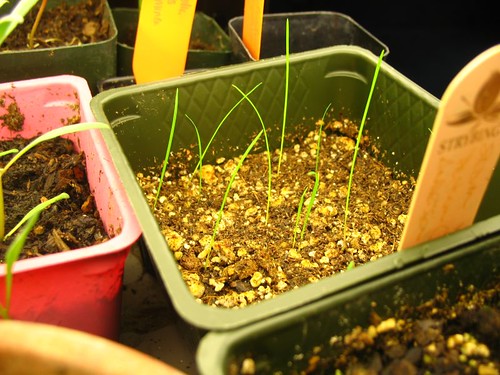
This, and Nassella pulchra (Purple Needlegrass) are slated to play a big role in the garden next year... The needlegrass is already planted out in the garden and doing fine.
For some reason I had exactly two Coyote Mint (Monardella villosa) seeds in my fridge. Why? I don't know. Sowed 'em.
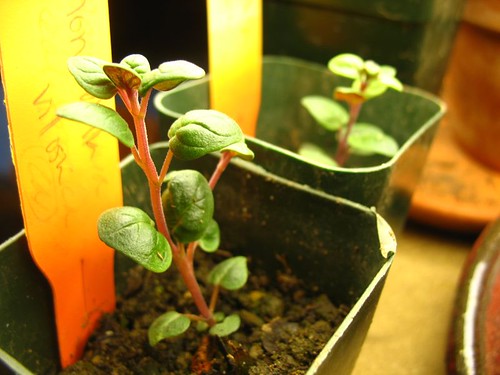
This is a small, short-lived native perennial that occurs in many situations. It's a good filler, bee-friendly, etc. I have three planted out, this will be five. The foliage has a nice, but not especially minty, fragrance.
Isomeris arborea, Bladderpod. Another plant I've never seen before.
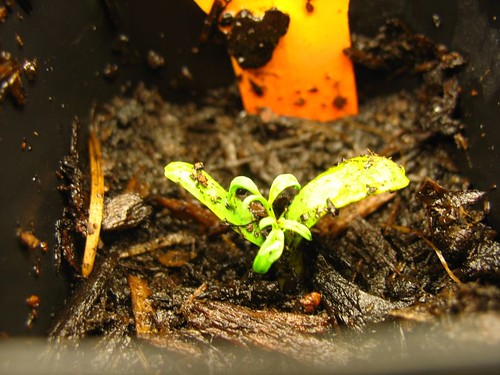
Apparently, it stinks. But it's supposed to be a good habitat plant and flowers constantly. I'm not sure what this plant's destiny in my garden is. Maybe I'll plant it at the pea patch. I think it grows in desert washes.
The Jacarandas came right up. Nooo idea what I'm going to do with these.
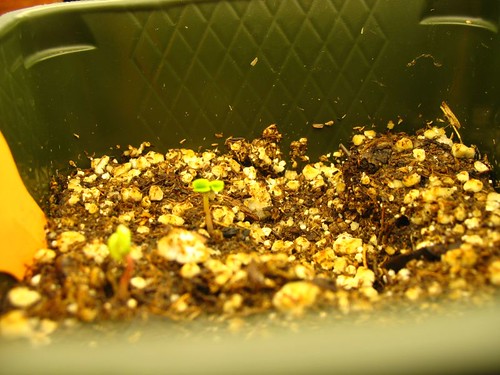

5 comments:
Thanks for reminding me about Judith Larner. I have one of her books, but forgot that she has seed business.
Her seeds are kind of expensive. I hope that means she goes to lengths to get seeds with strong genetic potential.
I like that lotus, and it's cool that it's also a host plant to an endangered butterfly. Purple needle grass? Sounds nice, do you have a post with pictures? I have a needle grass of some sort at home, but it's still pretty small. (Started from seed, too.)
Isomeris doesn't really smell that bad unless you crush the leaves and take a deep whiff. It's a desert plant, but also common in the coastal scrub of southern california. Hummingbirds love it.
Jacarandas are gross--get rid of them. I just associate them with the dewy crap they leave on my car if I have to park under one!
From your experience and the range of this species, I wlll take a tiny leap and assume the seeds require no stratification. Thanks for your help. This one is going in our test plots!
From it's color and long blooming season, this one could be terrific along the waters we design.
Post a Comment